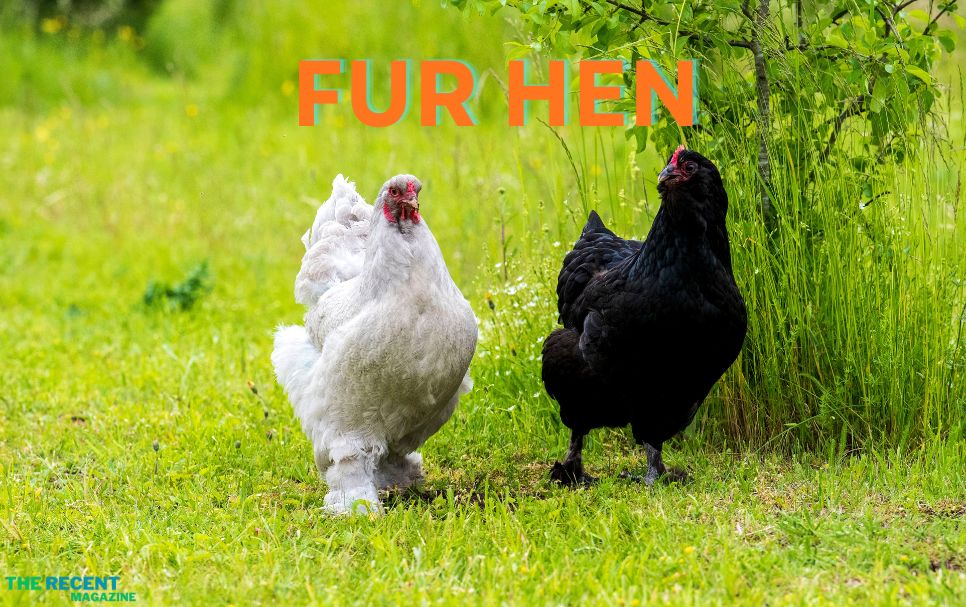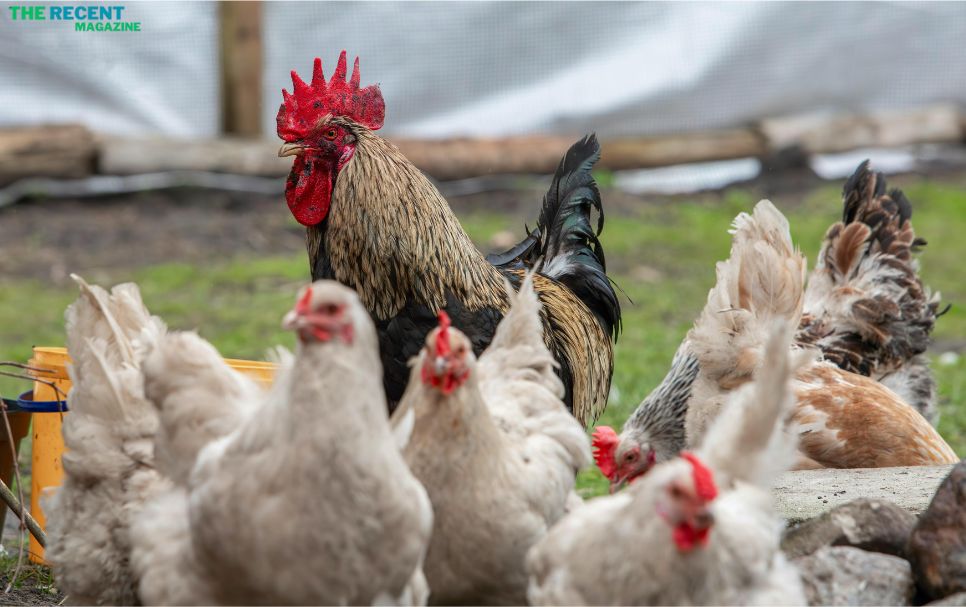Now Reading: Fur Hen: Ultimate Guide to Caring for This Unique Bird
-
01
Fur Hen: Ultimate Guide to Caring for This Unique Bird
Fur Hen: Ultimate Guide to Caring for This Unique Bird

Have you ever seen a chicken that looks like it’s covered in soft fur instead of feathers? If you haven’t, you’re about to discover the fascinating world of the Fur Hen, better known as the Silkie chicken.
This unique breed stands out with its fluffy, silky plumage that feels more like fur than feathers. But there’s more to Silkies than just their unusual appearance—they have black skin, blue earlobes, and even five toes on each foot! If you want to learn what makes these gentle birds so special and why they might be the perfect addition to your backyard flock, keep reading.
You’ll be amazed at the charm and history behind this furry-feathered friend.
Silkie Bird Traits
The Silkie birdhas unique traits that make it special. Its feathers feel like soft fur, unlike regular chickens. This makes them very fluffy and cuddly to touch.
Silkies have black skin and bones, which is rare among birds. Their blue earlobesstand out with a bright color. Another interesting feature is their extra toes; most chickens have four, but Silkies have five.
Their gentle temperamentmakes them great pets. They are calm, friendly, and easy to handle. Silkies enjoy being around people and other animals, making them perfect for families.
Visit here for more information and all update: therecentmagazine
Origins And History
The fur henhas Asian roots, mainly from China and Southeast Asia. These birds are unique because they look like they have soft fur instead of feathers. Early travelers, like Marco Polo, wrote about strange birds with fluffy coats. His stories helped introduce the fur hen to Europe.
Fur hens became popular petsin many countries due to their gentle nature and unusual appearance. They are calm and easy to care for, making them favorites in small farms and homes. People love their soft, almost furry feathers, which feel different from regular chickens.
Housing Needs
Coop requirementsfor fur hens must provide proper shelter. The coop should protect birds from rain, wind, and extreme temperatures. Fur hens need a dry, warm place to stay healthy. Ventilation is important but avoid drafts. Use bedding like straw or wood shavings for comfort.
The spaceinside the coop is vital. Each hen needs about 4 square feetof room inside. Outside space should be at least 8 square feetper bird for roaming. A clean, safe environment helps prevent disease. Provide perches for resting and nesting boxes for laying eggs.
The area around the coop should be fenced to keep predators out. Shade and fresh water must be always available. Plants or grass around the coop create a natural and comfortable space. Clean the coop often to maintain hygiene and comfort.
Feeding Essentials
A balanced dietfor a fur hen should include grains, vegetables, and protein. Fresh greens like lettuce and spinach provide vitamins. Grains such as corn and wheat offer energy. Small insects or mealworms add protein for healthy growth. Avoid giving too many treats to prevent obesity.
Treats and supplements can help fur hens stay healthy. Offer fruits like berries and apples in small amounts. Calcium supplements, like crushed eggshells, support strong eggshells. A multivitamin powder can fill nutritional gaps. Treats should be given sparingly to keep hens active.
Fresh wateris essential. Change water daily to keep it clean. Use shallow dishes to prevent drowning. Water helps with digestion and keeps hens cool. Always check water bowls for dirt or debris.
Health Care
Fur henscan face a few health challenges. Common health issuesinclude respiratory infections and skin problems. These can affect their feathers or fur-like covering. Regular observation helps spot symptoms early.
Parasite controlis very important. Mites, lice, and worms can harm fur hens. Use safe treatments to keep pests away. Clean their living area often to reduce parasite risks.
Regular checkupsby a vet keep hens healthy. Vets can spot problems before they get worse. Checkups also help keep vaccinations and treatments up to date. Healthy hens live longer and stay active.
Breeding And Raising Chicks
Broodiness in Silkiesmeans the hen wants to sit on eggs to hatch them. Silkies are known for being very broody. They stay warm and protect eggs well. This natural instinct helps chicks grow strong.
Incubation Processtakes about 21 days. Eggs need a steady temperature around 99 to 102 degrees Fahrenheit. Turning eggs gently three to five times daily helps the chick develop properly. Keep humidity steady to avoid drying out eggs.
Chick Care Basicsinclude providing warmth with a heat lamp or brooder. The temperature should be around 95°Fthe first week, lowering by 5 degrees each week. Fresh water and chick starter feed are important. Keep their area clean and dry to prevent illness.
Behavior And Social Life
Fur hen social birds. They like to be near others. They communicate with soft clucks and gentle pecks. Interaction with other birdsis calm but curious. They usually avoid fights and prefer peace.
Handling fur hens requires patience. Start by offering treats. Let them come to you slowly. Use quiet voices to calm them. Repeated gentle touch helps in tamingthem over time.
Recognizing stress signs is important. Signs include feather plucking, loud squawks, or hiding. A stressed hen may stop eating or move less. Watch for these to keep them healthy and happy.
Grooming And Maintenance
Keeping a fur hen healthy needs regular feather care. Their feathers must be clean and dry. Gently brush to remove dirt and debris. Avoid wetting feathers too often to prevent damage.
Bathing should be occasional. Use lukewarm waterand mild shampoo made for birds. Rinse well and dry completely with a soft towel. Warm, dry places help feathers dry faster.
Nails and beak need regular trimmingto avoid overgrowth. Use special bird nail clippers. Be careful not to cut too close to the quick, which can cause bleeding. A smooth beak helps the hen eat comfortably.
Common Challenges
Cold weathercan make fur hens uncomfortable. Providing warm sheltershelps protect them from frost. Use straw or hay for bedding to keep the ground warm. Cover windows to block cold drafts.
Feather damage reduces a hen’s ability to stay warm. Avoid rough handling and keep their living area clean. Check for mites or lice that can harm feathers. Use gentle grooming to keep feathers smooth and healthy.
Predators like foxes and hawks threaten fur hens. Secure coops with strong locks and wire mesh. Keep hens inside at night for safety. Regularly check fences for holes or weak spots to prevent attacks.
Silkies As Pets
Silkiesmake great petsfor families with children. They are gentleand calm, which helps kids feel safe. These birds do not mind being held and petted. Their soft, fluffy feathersfeel like fur, making them unique. Silkies are also friendlywith other pets and animals.
For care, Silkies can live indoors or outdoors. Inside, they need a clean, warm space. Outdoors, a safe, dry coopprotects them from rain and predators. They do not fly well, so fences keep them safe. Regular feeding and fresh water are important.
Silkies have some fun quirks. They often sit quietly on laps. Their five toesinstead of four is unusual. Silkies also have black skin and bones, which is rare. They may be a bit shy but love attention once they trust you.

Frequently Asked Questions
What Are The Fuzzy Chickens Called?
Fuzzy chickens are called Silkie chickens. They have soft, fur-like feathers, black skin, blue earlobes, and five toes per foot.
What Are Chickens With Fluffy Feet Called?
Chickens with fluffy feet are called Silkie chickens. They have soft, fur-like feathers and five toes per foot.
Why Are Cornish Hens So Expensive?
Cornish hens cost more due to their small size, tender meat, and longer raising time. Limited supply also drives prices higher.
What Is The Rarest Hen In The World?
The rarest hen in the world is the Silkie chicken. It has unique fluffy, fur-like feathers and black skin. Silkies also feature five toes and blue earlobes, making them distinct and highly prized among poultry enthusiasts.
Conclusion
Fur hens, like the Silkie breed, stand out with soft, fluffy feathers. They add charm and uniqueness to any flock. Caring for them is simple with the right knowledge. These birds are gentle and make great pets for families. Their unusual look draws attention and curiosity.
Understanding their needs helps them stay healthy and happy. Enjoy the special qualities fur hens bring to your home. They truly brighten any backyard with their furry appearance.






















